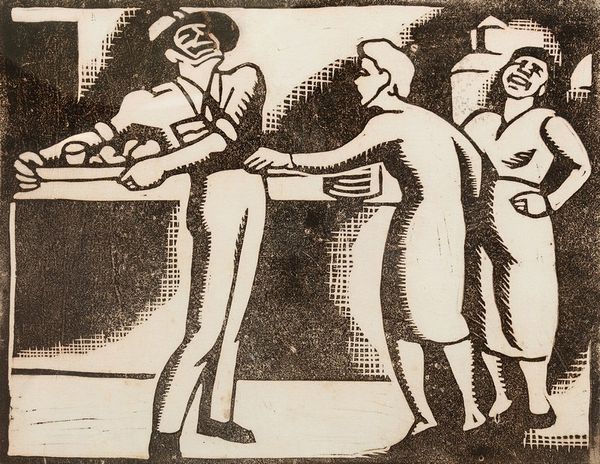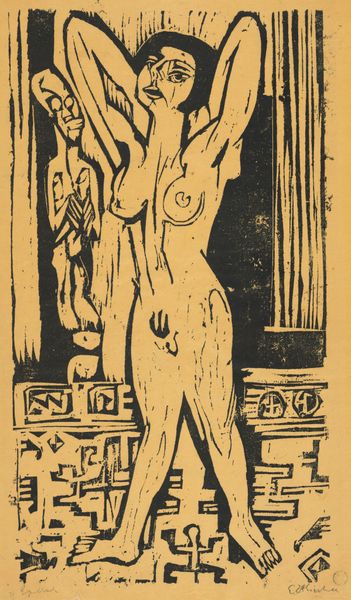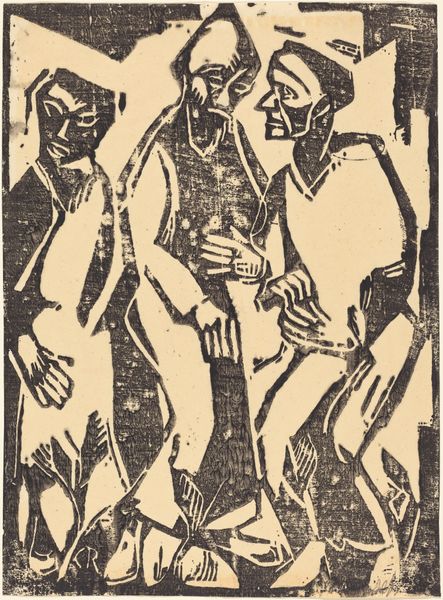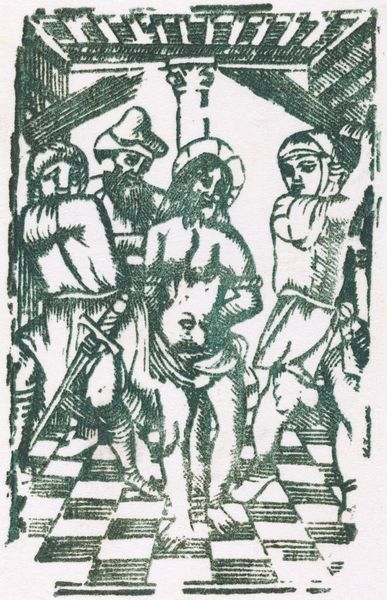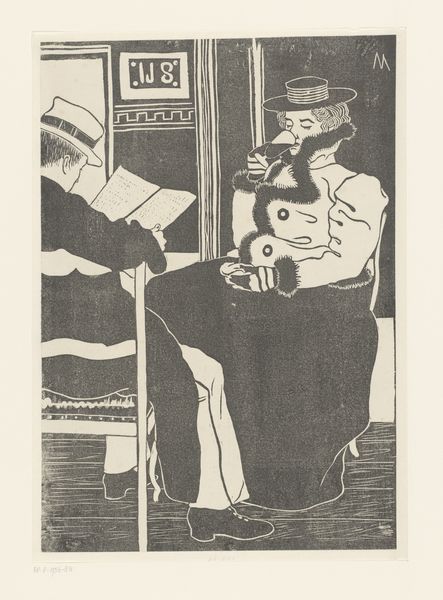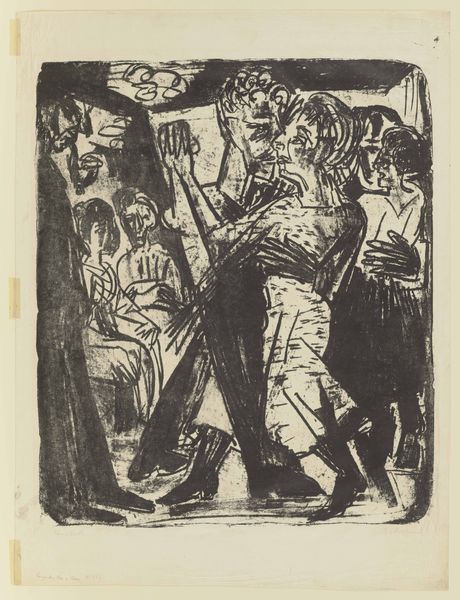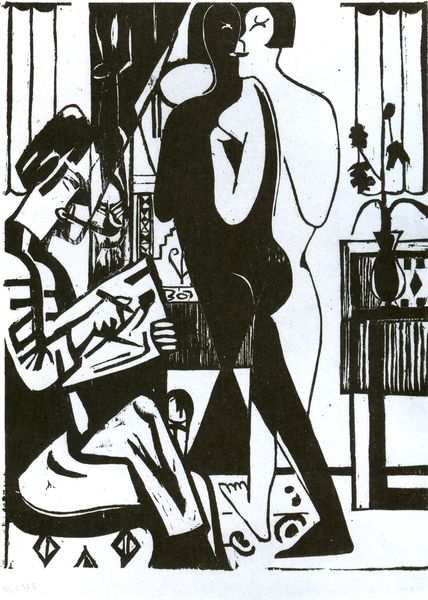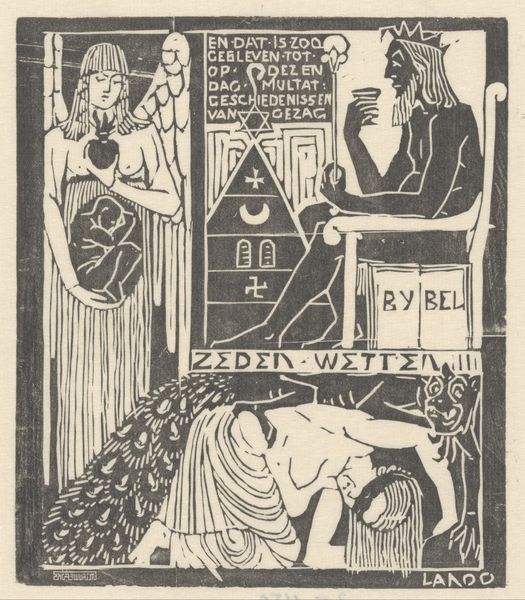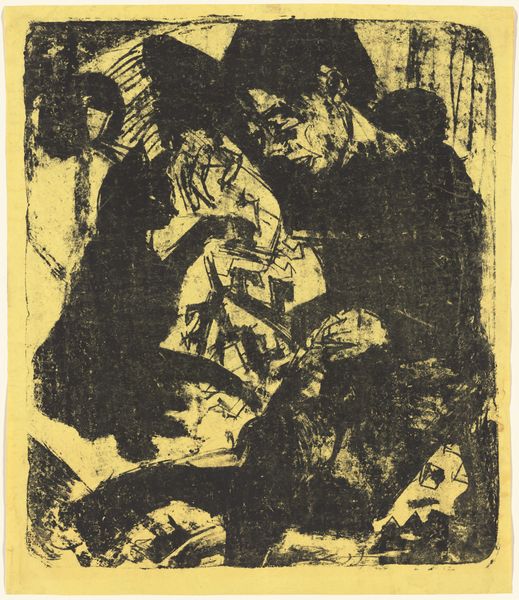
print, linocut, woodcut
#
ink drawing
#
narrative-art
# print
#
linocut
#
german-expressionism
#
figuration
#
linocut print
#
expressionism
#
woodcut
Dimensions: image: 31 x 26 cm (12 3/16 x 10 1/4 in.) sheet: 41 x 33.5 cm (16 1/8 x 13 3/16 in.)
Copyright: National Gallery of Art: CC0 1.0
Editor: So, here we have Ernst Ludwig Kirchner's 1923 linocut print, *The Visit*. It's... intense. The stark contrast of black and white, and the angular figures give it a really unsettling feel. What jumps out at you when you look at this piece? Curator: Well, immediately, the composition feels loaded with socio-political commentary. Kirchner was deeply affected by World War I, and much of his work reflects the anxieties and moral decay of postwar Germany. Notice how the scene is divided, almost stage-like. What do you make of that? Editor: I guess I hadn’t thought of it like a stage. You mean like the viewer is looking into a private world on display? Curator: Exactly! And who are the players? Consider the woman's pose – brazenly nude – against the clothed, almost dejected man. What societal dynamics are being portrayed through this confrontation, especially given the historical context? Editor: I see what you mean. The man almost looks ashamed, or trapped. Is the figure in the upper left looking on to judge him? I thought Expressionism was more focused on inner emotions, but this seems very critical of society too. Curator: German Expressionism wasn’t created in a vacuum. Artists like Kirchner were acutely aware of the public role of art, using imagery to confront uncomfortable truths about their society and question bourgeois values. So what do you think Kirchner is saying about "The Visit" within this complex societal context? Editor: Maybe that underneath the veneer of polite society, there's this…exploitation? A darker side we don't like to acknowledge? It is really striking how he uses the style itself—the jagged lines—to make a statement. Curator: Precisely! This dialogue really illuminated how even intensely personal styles like Expressionism can be powerfully intertwined with wider socio-political critique, and how museums affect how we see those critiques. Editor: Definitely gives me a lot to think about when looking at art from this period! Thanks for helping unpack all of that.
Comments
No comments
Be the first to comment and join the conversation on the ultimate creative platform.

